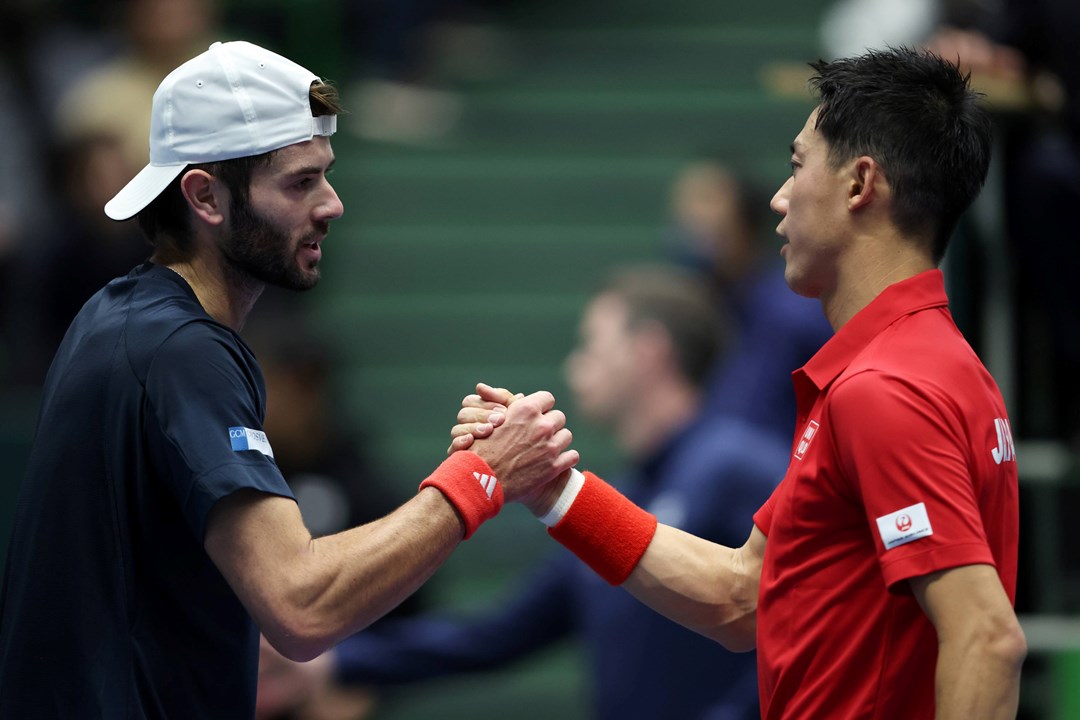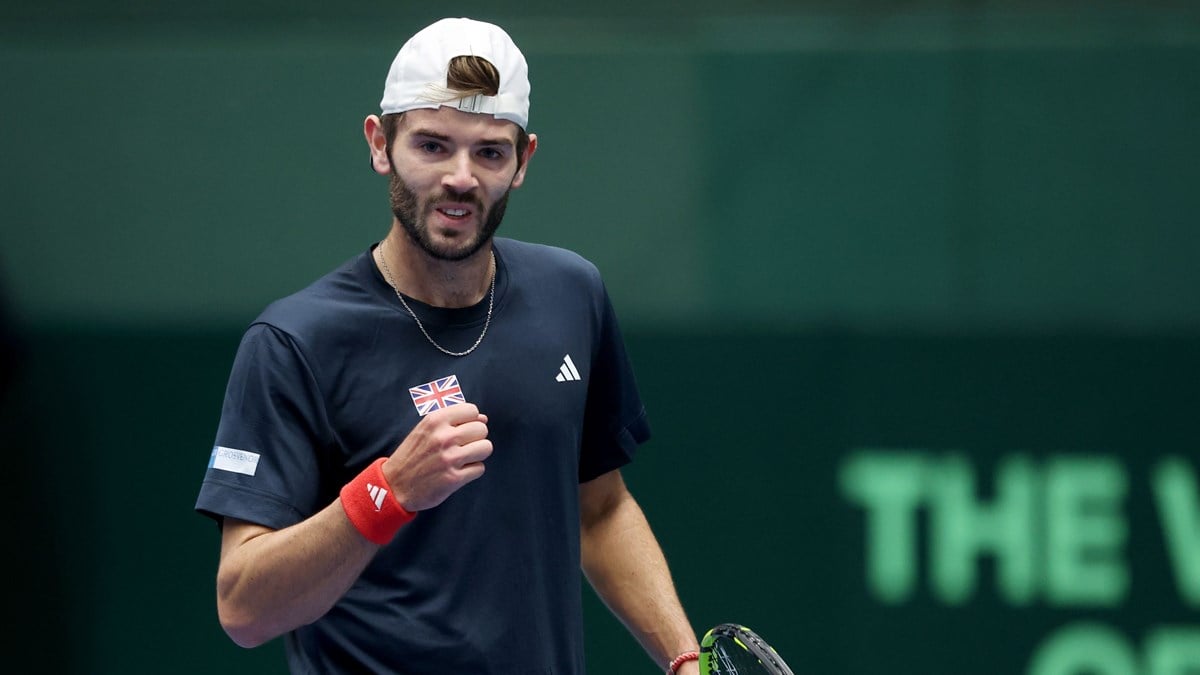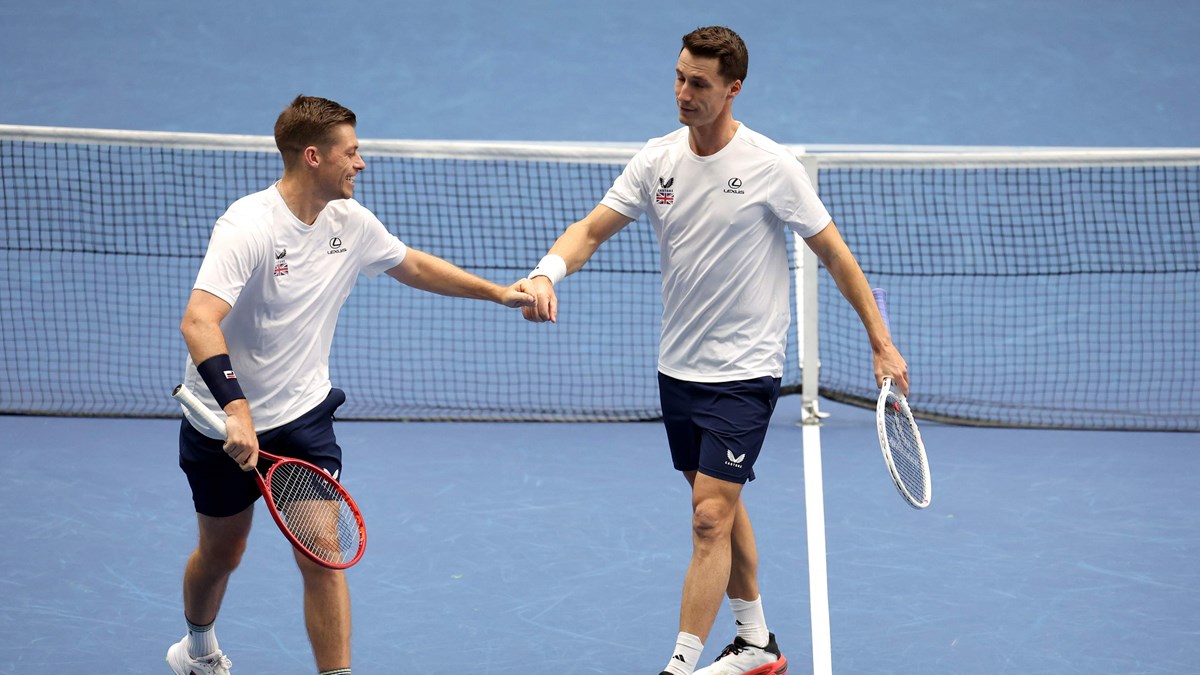
Davis Cup 2025: Three takeaways from Great Britain vs Japan
• 3 MINUTE READ
It was heartbreak for the Lexus GB Davis Cup team at the Bourbon Beans Dome in Miki, losing out to a strong Japanese side 3-2 in the first round of qualifiers.
After a close tie that came down to the final rubber, we break down the three biggest takeaways from an action-packed couple of days in Japan.
Fearnley rises to the occasion
One of the biggest positives for Captain Leon Smith and the British team has been the emergence of Jacob Fearnley and how he was able to handle the pressure on debut.
Fearnley has had a whirlwind nine months since graduating from Texas Christian University filled with many firsts and every time he’s been faced with a new challenge he’s stepped up to the plate. The Davis Cup was no different.
Coming into the tie as the top-ranked British player – with both Jack Draper and Cam Norrie absent this time around – Fearnley was given the task of taking on former world No.4 Kei Nishikori in front of his first ever Davis Cup match.

However, the British No.3 stood up to the test and showed a high level to beat the 12-time ATP title winner 6-3, 6-3 to square up the tie after day one.
Perhaps the most impressive element of his performance was the way Fearnley handled the big points and moments within the match. The 23-year-old saved six of seven break points he faced, and he managed to overcome a break deficit in the second set to win five of the last six games.
Not only that, but Fearnley served incredibly well against Nishikori. He only dropped four points on serve in the opening set which gave him the platform to deliver the 35-year-old Japanese stars fourth Davis Cup defeat in 26 rubbers for his country.
Fearnley went on to lose his second match against an inspired world No.67 Yoshihito Nishioka, but there are plenty of positives for the young Briton to take from both his performances and fans can expect to see a lot more from him in the years to come.
Impressive signs for British doubles duo

Over recent years, the Brits have explored a few different doubles partnerships – with Neal Skupski having teamed up with Dan Evans, Andy Murray and most recently Henry Patten.
At the start of this year, Skupski partnered with fellow Brit Joe Salisbury on the ATP Tour and the early signs suggest that having a more established team could prove a bonus for the GB team.
Skupski and Salisbury gave the Brits a 2-1 lead going into the second round of singles rubbers after a 7-6(4), 7-6(3) win over Yosuke Watanuki and Yuzuki Takeru.
The former world No.1s put in a solid showing against the Japanese duo in a crucial win. They weren’t broken throughout the match and only dropped three points behind their first serves across both sets.
The pair have played together previously in the Davis Cup, but their knowledge and understanding of each other’s games appears to have reached a new level. This was most evident in both tie-breaks. In the first set they showed great character to come back from 3-0 down to win it and then in the second set, they got out to an early lead and then never looked back.
Their ability to come up clutch in the defining moments of matches will be a huge positive both for the players and their captain and will give them good experience to draw upon in the future.
Could this be a set Davis Cup partnership for years to come and will we see the Brits competing for the biggest titles this season? Only time will tell.
Japanese experience provides the edge
Ultimately the defining factor in the match was the experience of the Japanese team to help them see out a hard-fought victory.
Nishikori and Nishioka came into the tie with 45 Davis Cup matches between them, while Fearnley and Billy Harris only had one.
Nishioka – arguably the star performer of the tie – held his nerve in a must-win rubber with Fearnley, in which he won seven straight points to clinch a second set tie-break.
Then it was over to the former world No.4 who stepped up in the deciding match against Harris to claim his 300th hard court victory – staving off any chance of a late resurgence from the Briton by saving three critical break points in the second set at 3-1 0-40.
The experience of being in those situations before, competing at the Davis Cup and under the biggest pressure, was evident on the court. Both looked more comfortable in the big moments, served well and cut down the error count, which led their nation into the second round of the qualifiers.
The positive takeaways for the Brits is that now they are starting to bank these experiences for themselves, which can only benefit them going forward.






